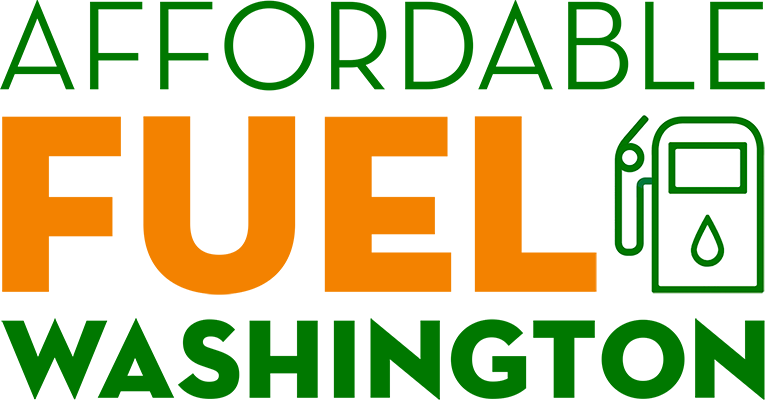Washington’s Gas Tax Will Increase Every Year Raising Costs to Consumers, Families and Businesses
Washington’s recently enacted transportation funding package included a hike to the state’s gas tax. Effective July 1, 2025, the state gas tax increased by 6 cents per gallon, raising it from 49.4 cents per gallon to 55.4 cents per gallon. Beginning July 1, 2026, this tax will automatically increase by 2% annually to account for inflation.
Washington now has the third highest state gas tax in the U.S.1
The Washington Research Council projects the gas tax will increase to 60 cents per gallon by 2029.2
The gas tax hike will increase prices at the pump year after year, hurting family budgets and increasing transportation costs, which will likely be passed onto consumers in the form of higher prices for everyday goods and services.
Changes to Washington’s Low Carbon Fuel Standard will be Costly and Regressive
Changes adopted by the 2025 Legislature to significantly increase the stringency of this fuel mandate will increase fuel costs and make long-term compliance infeasible.3 The Low Carbon Fuel Standard (LCFS) aims to lower the carbon content of fuels by blending them with increasing amounts of biofuels or by the adoption of more electric vehicles. Fuel suppliers who do not meet the mandate’s requirements must purchase compliance “credits” from suppliers of lower carbon transportation fuels.
Industry experts estimate that the LCFS mandate is currently adding about one cent to the cost of a gallon of gasoline. This cost is expected to increase to an estimated 26 cents per gallon by 2029.3
Washington’s Cap-and-Trade Program will Become Increasingly More Expensive Over Time
Washington’s Cap-and-Trade climate mandate continues to grow more expensive. Since its launch in 2023, the Department of Ecology reports this program has already collected over $3 Billion in state compliance costs through September 2025.4 This is over 3 times more expensive than originally predicted when the program was passed by the legislature.5
Many experts are highly skeptical about the long-term feasibility of this program. In Washington’s rush to become the “greenest” state in the nation, the program doesn’t consider whether there is even a realistic way to comply with the aggressive goals that have been set by the program or what the cost impacts will be for Washington’s economy and consumers.6
Industry experts estimate that Washington’s Cap-and-Trade program is currently adding about 50 cents to the cost of a gallon of gasoline7 which is expected to increase to about 90 cents per gallon by 2029.8
This program needs to work as intended in meeting climate goals without placing regressive cost burdens on Washington families and businesses.
- Federation of Tax Administrators, State Motor Fuel Tax Rates, 2025.
- Washington Research Council, Memorandum to Western States Petroleum Association, Washington fuel tax rates under ESSB 5801, May 7, 2025.
- Stillwater Associates LLC, “Impacts of the Proposed Washington HB-1409 CFS Changes on Fuel Prices,” prepared for Western States Petroleum Association, March 28, 2025.
- Washington Department of Ecology, Cap-and-Invest Auction and Market Reports for 2023, 2024, 2025.
- Washington Office of Fiscal Management, Fiscal Note, E2SSB 5126, May 21, 2021 (based on the originally projected allowance proceeds of $888M for 2023 and 2024).
- Carr Bon-Neutral Consulting, “Concerns Regarding Washington’s Cap-and-Invest Program,” prepared for Western States Petroleum Association, April 2022.
- Stillwater Associates LLC analysis utilizing Oil Price Information Service (OPIS) data.
- NERA, “Assessing Impact of Linkage of Washington State’s Greenhouse Gas “Cap-and-Invest” Program to California and Quebec Programs, prepared for Western States Petroleum Association, October 28, 2025.
